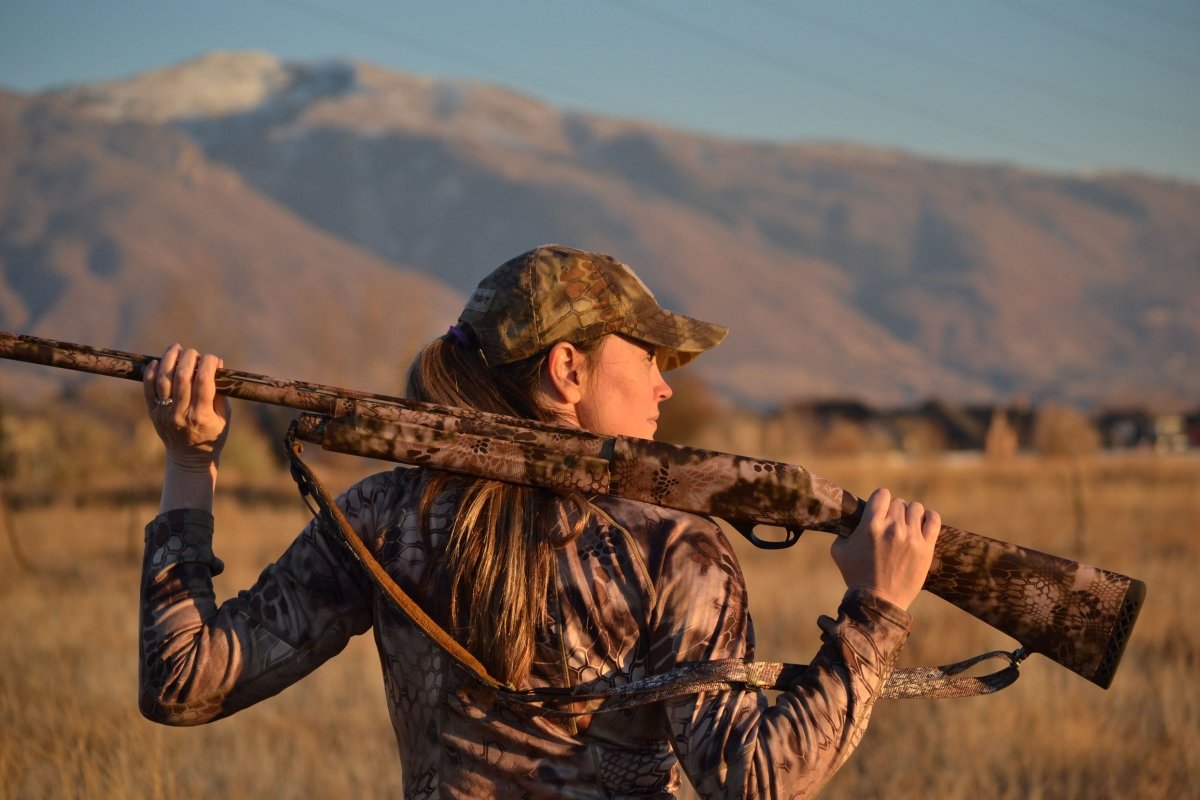A Complete Guide to Skeet Shooting

Skeet shooting is a fun and exciting sport for recreational gun owners and hunters alike. The game involves fast-moving clay targets to take aim at and a variety of positions to make sure that you never quite get too comfortable.
Off-season turkey hunters can take advantage of the sport to stay sharp while waiting for their season to begin, and for gun owners who primarily arm themselves for defense, it can also be an excellent form of target practice. Having a group of friends join you add the element of friendly competition.
If you’re new to skeet shooting or just generally want to learn more about the sport, it has a rich history and standard procedures that make the game what it is: exciting.
What Is Skeet Shooting?
You might already know what skeet shooting is, but if you’re a new gun owner and are interested in learning more, we’ll cover the basics.
Skeet shooting is a recreational activity for hunters and general gun owners in which a clay disc is flung into the sky for the shooter to aim at, replicating a bird in flight. Almost always done with a shotgun as opposed to your favorite hunting rifle, there are competitive levels of skeet shooting that go up to the Olympic level. It’s a fantastic way for hunters to keep their aim strong in the off-season, and many simply enjoy the thrill.
In regulation skeet shooting, the shooter positions themself in seven different spots that form a semicircle with an eighth position in the center. At each point of the semicircle stand two launching points, known as “traps.”
These are where the disks are launched from—one trap launches high, and the other low. Conventional operation of skeet shooting has the semicircle positions split into the first two, the next three, the last two, with the eighth position last.
At the first two positions, the shooter aims one disk launched from each trap and then a round wherein each trap fires simultaneously, aiming at the high target first and the low second. Positions three, four, and five have the shooter firing only at individual targets from each trap and no simultaneous release. Positions six and seven repeat similarly to one and two; however, when both targets are launched simultaneously, the shooter aims for the low first and the high second.
The shooter is expected to hit one more target from each trap from the eighth center position. From there, they must re-do any target that they missed. Otherwise, they must hit another target from the low trap at the eighth position once more.
Of course, these are the regulation rules for skeet shooting, and you can partake in the activity without all of the rigidness. Some gun clubs might have their own process. But moving around certainly does help your aim as a practice for the actual field.
Tips for Skeet Shooting
Whether you’re a seasoned pro or just entering skeet shooting for the first time, it always helps you to learn and grow as a gun owner continually. Here are a few tips to get your skeet skills stronger.
Know the Course
Being aware of your target angles and the placement of the positions will help a great deal when it comes to skeet shooting. If it’s your first time at a particular range, pay attention to the arc and launch height of the discs, as they might not be exactly the same as others.
The discs will always launch at the same speed, height, and arc per trap, but as you move around different positions, the angle you aim will constantly change. Being familiar with the particular traps in front of you will reduce the amount of work you have to do once the target is in the sky so that you can focus on the disc itself.
Focus on Your Posture
When firing a gun, posture is everything. You want to be firm but not stiff, flexible but not too loose. Particularly when aiming for a moving target like a disc, you need a full range of motion and control when following the bird through the sky. You won’t have much time to prepare once the target is launched, so your stance should be strong before you ever raise your gun.
Follow the Bird With Your Dominant Eye
While following any moving target, it’s important to use your dominant eye. Just like our hands, everyone has one eye that’s stronger than the other. A great way to test which eye is dominant is by creating a triangle with your thumbs and index fingers by putting the tips together and finding an object on the other side of the room, like a clock. Line up the object so that it’s at the center of your triangle, doing so with both eyes open.
Close your left eye, and if the clock is still at the center of your finger triangle then you know that your right eye, the one that’s still open, is the dominant eye. If the object is suddenly skewed while your left eye is closed, then the left would be your dominant side.
Fire at the Right Moment
An essential lesson in any hunting situation is that you never want to shoot directly at a moving target, especially one so small and quick as a skeet disc. If you do, your shot will likely be behind the target, or where it was instead of where it is.
Instead, focus on the trajectory of the target and aim just ahead of it. It might take practice to get a good sense of the distance and how quickly your shot is moving, thus how far ahead you need to fire, but that’s something that will come with learning your weapon.
Be the Master of Your Gun
Every firearm owner should aspire to master the ins and out of their gun. Knowing how far ahead you need to aim at a moving target is just one example. You should also have a good feeling of how far back your trigger needs to be for the hammer to be set off or how much kickback to expect from each shot.
You don’t want to anticipate recoil as this can throw off your aim, but you also don’t want to be surprised by how much force goes into your shoulder.
The other element you should be aware of regarding your firearm is what choke to choose. The choke is a screw-on tube attachment that goes right at the end of your barrel, and it helps control the pattern and spread of your shot.
While it might seem obvious, the skeet choke is one of the best choices for skeet shooting. It allows for a fast and widespread that’s more forgiving when it comes to the fast target. It is great because it doesn’t just work for skeet shooting and is valuable when hunting upland birds.
If the skeet choke is flaring out too much for you at positions four through six, tighten up the choke a bit to an improved cylinder choke—twice as tight as the skeet, but still a relatively open choke.
Don’t Skeet Alone
Having a community of like-minded gun owners is a fantastic way to boost your knowledge and have a more enjoyable experience at the range. Shared information amongst shooters helps everyone involved as you’ve all likely learned different lessons than the others.
When you are shooting with others, make sure to follow proper handling protocol. Always treat every firearm as if it’s actively loaded and use extreme caution and responsibility with a shotgun in your hands. Even a tiny mistake can lead to a terrible accident with such powerful weapons.
Skeet shooting is a great time to have your friends with you on the skeet range, and you can use a little friendly competition for inspiration to do better.
 The History of Skeet Shooting
The History of Skeet Shooting
Skeet shooting is a fun way to get out with your shotgun and practice your skills, which is exactly what the creators intended.
Developed back in the early 1920s by Charles Davis and his cohort William Foster, skeet shooting was originally called “Shooting Around The Clock” due to the full circle formation they used. The main difference in their original game was the full circle instead of the semi-circle, and that they only had one trap house firing targets.
But it wasn’t long before Foster suggested that they add a second launching point and only use half of the circle, and in 1926 the pair presented the game to national magazines to spread its popularity. They held a contest to determine what to call the game, and as you might assume, Skeet was the winner.
In 1928 the National Skeet Shooting Association was created, and 40 years later, William Foster was given a title in their Hall of Fame.
William Foster is regularly credited as being the “Father of Skeet” because of his contributions to the game, but Charles Davis truly originated the idea. Without either one of them, the game would not exist.
Skeet Shooting
Skeet shooting is a great way to get experience with your shotgun, have a good time with your friends, and prepare for the birds come hunting season. And if you want to make your gun reflect your individuality, GunSkins premium vinyl wraps patterns include camo, hunting, military, and tactical so that you can make your gun your own. Our shotgun vinyl wraps are perfect for any skeet shooter who wants to compete in style.
If you want to build your skeet shooting strengths, focus on your stance and have a firm sense of control over your weapon. Use relatively wide flaring chokes, particularly if you’re a beginner unless you want more of a challenge.
Sources:


0 comments